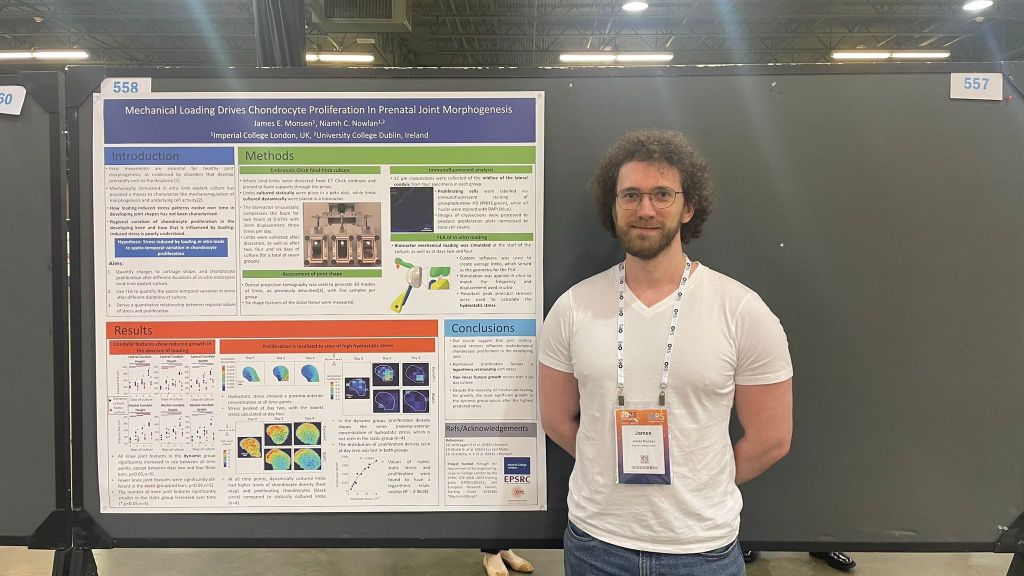Prof Nowlan was awarded >€2 million through a prestigious ERC Consolidator Grant. The ‘ReZone’ project, aims to bring about enhanced regeneration of Articular Cartilage through activation of the developmental processes which form zonal functional cartilage in early life, and ultimately improve quality of life for patients with articular cartilage defects worldwide.
Professor Nowlan said: “I am thrilled and very grateful to be awarded an ERC Consolidator Grant. This will enable us to understand how mechanical loading affects the development of cartilage, with implications for both cartilage regeneration and for orthopaedic conditions affecting children. Articular cartilage is an amazing material that we depend upon for pain free movement. Due to its poor healing ability, cartilage needs to last a lifetime. What makes healthy cartilage low friction and long-lasting is its complex layered (zonal) structure, but current surgical techniques to fix damaged cartilage cannot recreate the original structure. Therefore, repair cartilage tends to break down, leading to the need for further surgeries and possibly even joint replacement.”
“In the ReZone project, we will find out how the zonal structure of cartilage forms after birth, and in particular how mechanical loading affects the cartilage layers. Through discovering how articular cartilage grows and develops, we hope to be able to (re)activate those processes in adults to be able to truly regenerate articular cartilage and help patients suffering from joint pain across the world. I would like to thank all of the people who helped in the preparation of the proposal, and all my collaborators. In particular I would like to acknowledge my key collaborator Professor Pieter Brama with whom I am excited to continue working closely. I would also like to acknowledge my funding sources to date in UCD, especially Science Foundation Ireland and Wellcome Leap”.



















